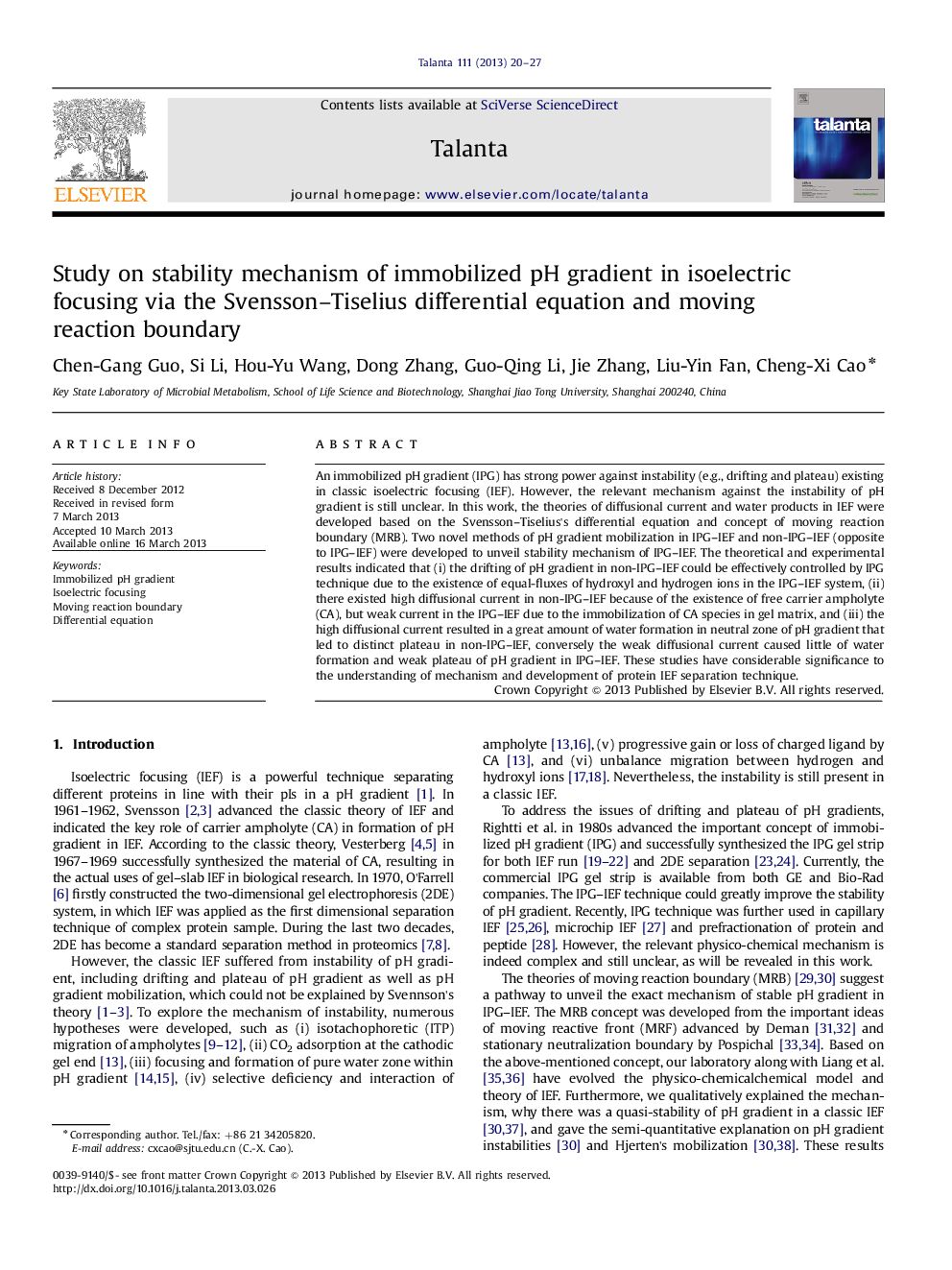| Article ID | Journal | Published Year | Pages | File Type |
|---|---|---|---|---|
| 7682302 | Talanta | 2013 | 8 Pages |
Abstract
An immobilized pH gradient (IPG) has strong power against instability (e.g., drifting and plateau) existing in classic isoelectric focusing (IEF). However, the relevant mechanism against the instability of pH gradient is still unclear. In this work, the theories of diffusional current and water products in IEF were developed based on the Svensson-Tiselius's differential equation and concept of moving reaction boundary (MRB). Two novel methods of pH gradient mobilization in IPG-IEF and non-IPG-IEF (opposite to IPG-IEF) were developed to unveil stability mechanism of IPG-IEF. The theoretical and experimental results indicated that (i) the drifting of pH gradient in non-IPG-IEF could be effectively controlled by IPG technique due to the existence of equal-fluxes of hydroxyl and hydrogen ions in the IPG-IEF system, (ii) there existed high diffusional current in non-IPG-IEF because of the existence of free carrier ampholyte (CA), but weak current in the IPG-IEF due to the immobilization of CA species in gel matrix, and (iii) the high diffusional current resulted in a great amount of water formation in neutral zone of pH gradient that led to distinct plateau in non-IPG-IEF, conversely the weak diffusional current caused little of water formation and weak plateau of pH gradient in IPG-IEF. These studies have considerable significance to the understanding of mechanism and development of protein IEF separation technique.
Related Topics
Physical Sciences and Engineering
Chemistry
Analytical Chemistry
Authors
Chen-Gang Guo, Si Li, Hou-Yu Wang, Dong Zhang, Guo-Qing Li, Jie Zhang, Liu-Yin Fan, Cheng-Xi Cao,
